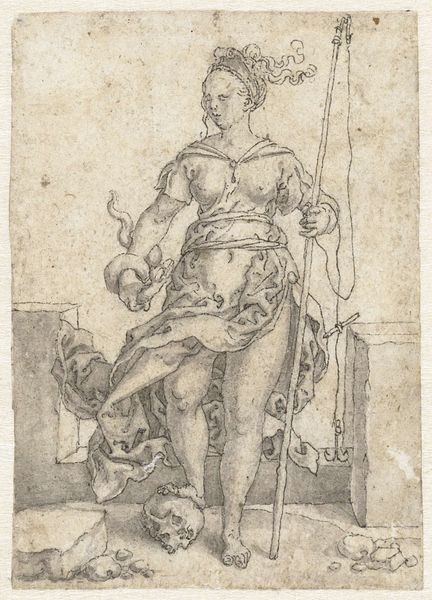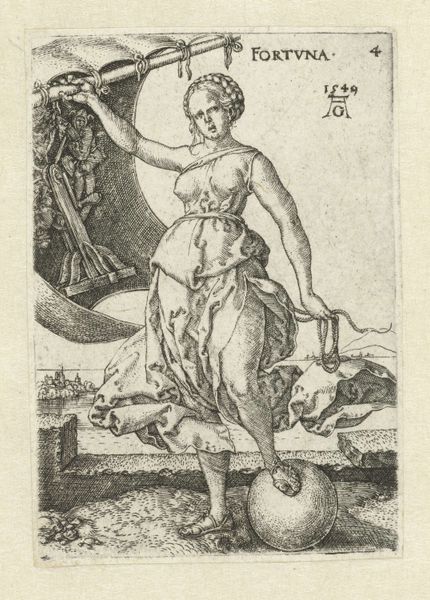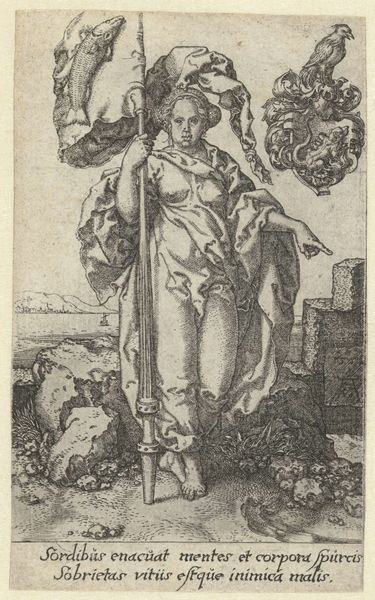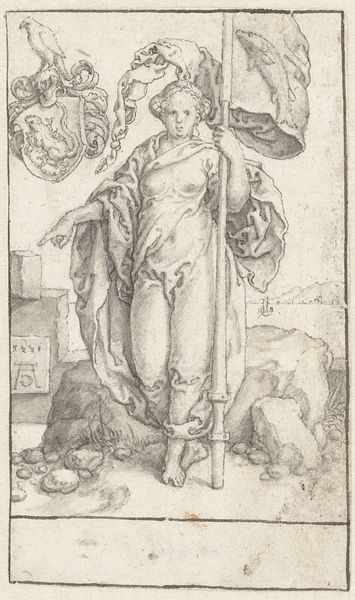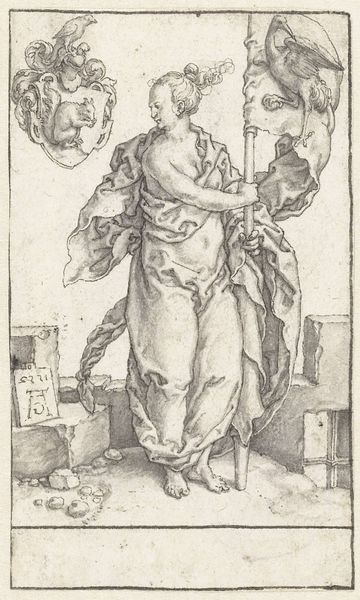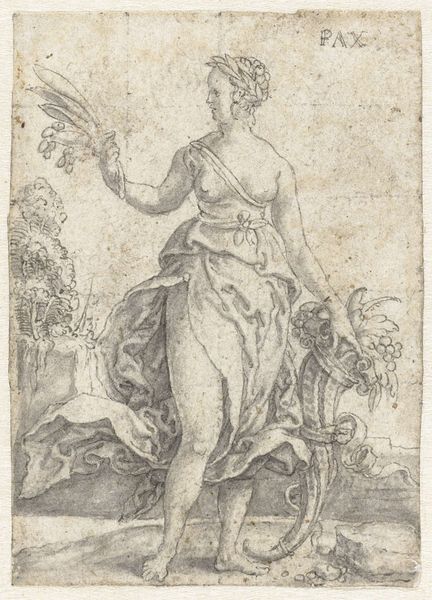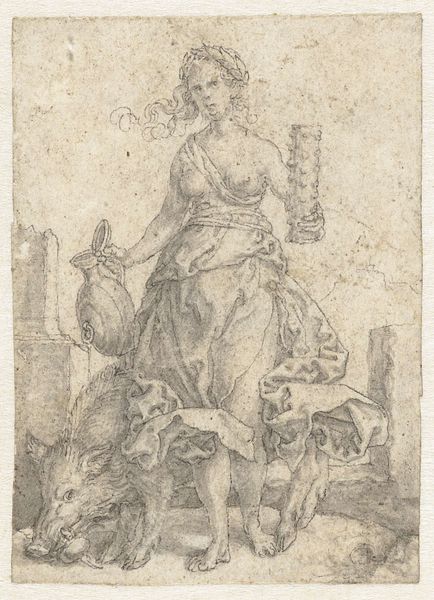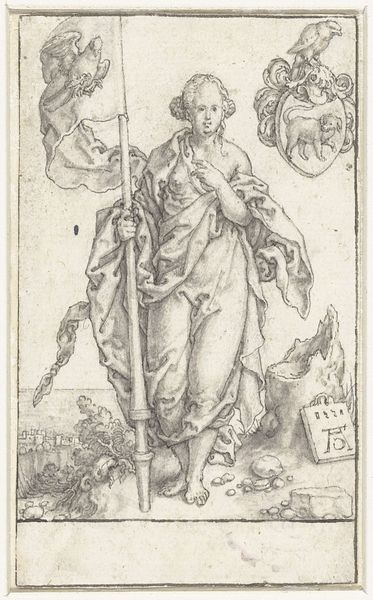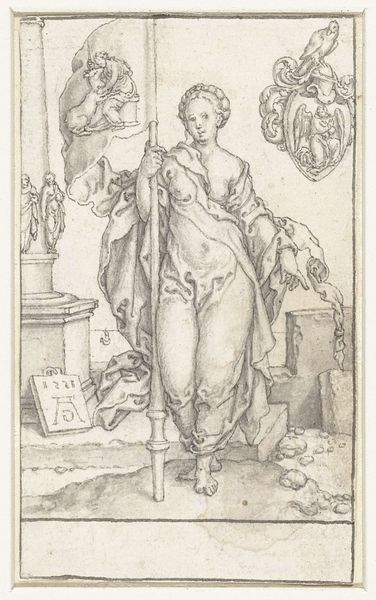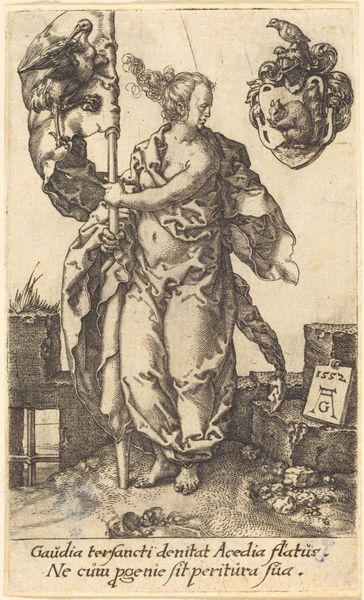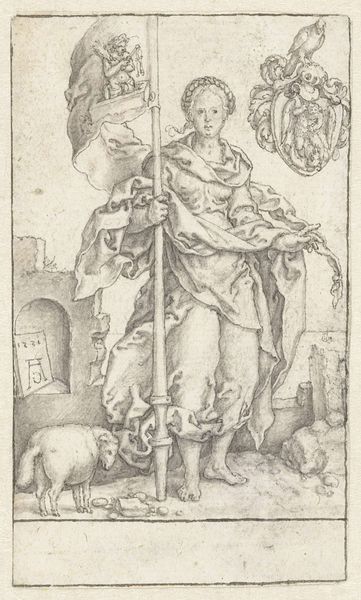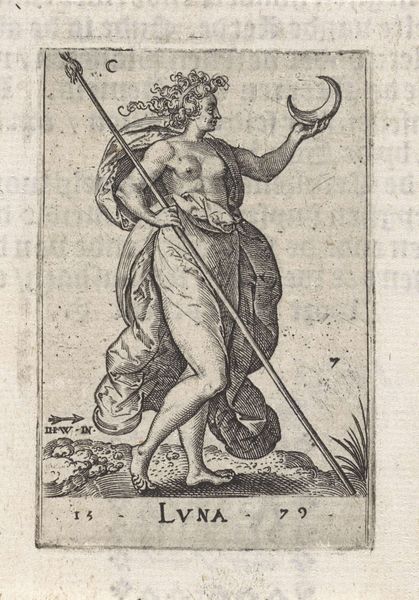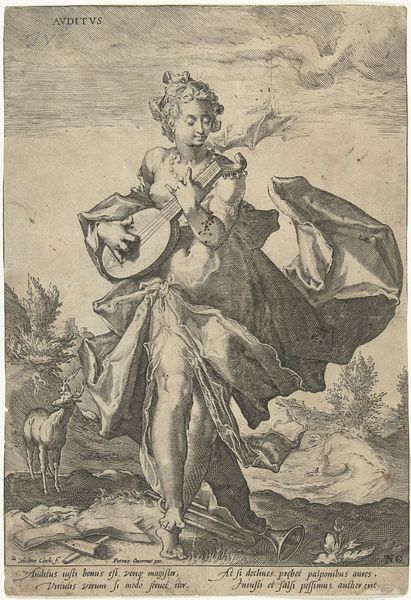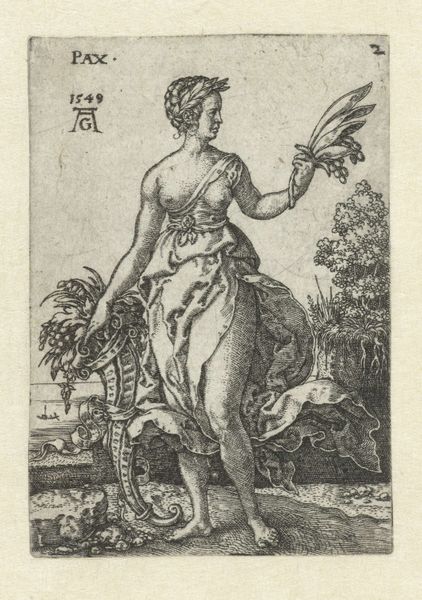
drawing, print, graphite
#
drawing
#
allegory
# print
#
mannerism
#
figuration
#
coloured pencil
#
pen-ink sketch
#
graphite
#
history-painting
Dimensions: height 70 mm, width 50 mm
Copyright: Rijks Museum: Open Domain
Curator: Here we have "Fortuna," a print made between 1548 and 1549 by the German artist Heinrich Aldegrever. It currently resides in the Rijksmuseum. Editor: The immediate impression is precariousness, isn't it? That delicate figure balanced atop a sphere—it evokes instability, even danger. Curator: Indeed. The composition itself is quite deliberate. Note the Mannerist elongation of the figure, the way the lines direct the eye upwards toward the chaotic wheel of fortune in the background. It's a study in controlled asymmetry. Editor: It's a potent representation of Fortune as a capricious force. The wheel itself, teeming with figures rising and falling, symbolizes the cyclical nature of fate. And doesn’t she look alarmed? Her grip on those flowing lines seems tenuous at best. Is that supposed to mean the reins of Fortune? Curator: It certainly plays on those classical symbols. The sphere, of course, alludes to the world’s inherent instability, but Aldegrever also subverts those symbols somewhat. The sharp, precise engraving lends a certain coolness, even an analytical quality, to a subject typically fraught with emotion. There is even some writing at her leg...can you read it? Editor: I see it. And her drapery certainly reminds of those classical depictions of a Greek Goddess, with it revealing clothing and loose draping around her hips and waist. And with the text inscribed I cannot quite make out. Perhaps 'resist fate' written near her leg...how do you feel about my read? Curator: Interesting. Perhaps there are subtle nuances that complicate a simplistic reading of fatalism... that this is a warning, more so than just some acknowledgement. Ultimately, Aldegrever has presented the viewer with an allegory of fortune using his mastery of line. It allows the viewers to see past our normal human interpretation and into artful execution, inviting continuous reflection about a very real situation that happens to many people across time and culture. Editor: I agree completely. What is the old saying "the wheel always turns"? Perhaps this is more than an allegory, but the artist giving us hope through acknowledging the dark moments of history and individual experience.
Comments
No comments
Be the first to comment and join the conversation on the ultimate creative platform.
